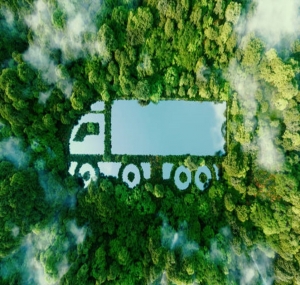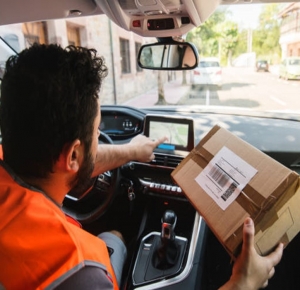Managing Client Relationships
As an agency driver in the logistics sector, you represent not only yourself but also the agency that employs you. Building strong relationships with an agency's clients is essential for ensuring ongoing opportunities, professional growth, and a positive reputation. This guide outlines how to maintain and manage these relationships effectively.
Why Are Client Relationships Important for Agency Drivers
Agency drivers often work with a variety of clients, from small businesses to large logistics companies. Strong relationships can lead to:
- Consistent Work Opportunities: Clients are more likely to request drivers they trust and have positive experiences with.
- Positive Reputation: Your performance reflects on both you and the agency, which can open doors for further opportunities.
- Professional Growth: Clients may provide feedback that helps you improve and excel in your role.
Key Strategies for Managing Relationships as an Agency Driver
- Professional Communication - Be courteous and professional in all interactions, whether in person, via phone, or through email and confirm assignment details (delivery locations, schedules, specific requirements) to avoid misunderstandings.
- Punctuality and Reliability - Arrive on time for all assignments, showing that you value the client’s time and communicate immediately with both the agency and client if delays or issues arise.
- Understand Client Expectations - Familiarise yourself with the client’s specific processes, preferences, and expectations and pay attention during briefings and ask questions if anything is unclear.
- Be Flexible and Adaptable - As an agency driver, you may encounter a range of work environments and demands and flexibility demonstrates your willingness to meet client needs and adapt to changes.
- Represent the Agency Well - Your behaviour reflects on your agency. Maintain a professional appearance, follow safety protocols, and adhere to company policies and treat every assignment as an opportunity to showcase your skills and work ethic.
- Seek Feedback and Act on It - Ask clients for feedback on your performance to identify areas for improvement and use constructive feedback to refine your skills and demonstrate a commitment to excellence.
- Maintain a Positive Attitude - Stay calm and professional, even in challenging situations. A positive attitude can leave a lasting impression on clients.
Benefits of Managing Relationships Well
- Repeat Assignments: Clients are more likely to request drivers who meet or exceed expectations.
- Stronger Agency Reputation: Your professionalism enhances the agency's standing with its clients.
- Career Development: Positive client relationships can lead to longer-term contracts, recommendations, or career advancements.
- Workplace Satisfaction: Building rapport with clients makes for a more enjoyable and rewarding working experience.
Common Challenges and How to Overcome Them
- Last-Minute Changes - Be adaptable and maintain open communication with the agency and clients.
- Unfamiliar Work Environments - Arrive prepared and ask questions to quickly understand procedures and expectations.
- Difficult Clients or Situations - Stay professional, focus on resolving the issue, and seek support from the agency if necessary.
For More Information
Explore opportunities through Quicktemp to gain valuable assignments and experience in the logistics sector. Strengthen your skills as an agency driver and build lasting relationships with clients: https://www.quicktemp.co.uk/candidates
Disclaimer
This guide is intended for information only and is not an authoritative document. Quicktemp and its affiliates accept no liability for any errors or omissions.
Future of Green Logistics
As environmental concerns grow, the logistics sector in the UK is moving towards greener practices to reduce carbon emissions and achieve sustainability goals. For drivers, adapting to green logistics offers the chance to contribute to a cleaner future while staying ahead in an evolving industry.
What is Green Logistics
Green logistics focuses on minimising the environmental impact of transporting goods. This includes adopting eco-friendly technologies, optimising routes, and using alternative fuels. The aim is to balance efficiency with sustainability, helping businesses meet environmental targets and comply with regulations.
Green Initiatives in Logistics
- Electric and Hybrid Vehicles (EVs and HEVs): Many logistics companies are transitioning to electric and hybrid vehicles. These vehicles emit fewer pollutants and reduce reliance on fossil fuels. Drivers of EVs benefit from quieter rides and lower operating costs.
- Alternative Fuels: Cleaner alternatives to diesel, such as biodiesel, hydrogen, and compressed natural gas (CNG), are becoming increasingly popular. These fuels help reduce greenhouse gas emissions and support sustainability efforts.
- Eco-Driving Techniques: Training drivers in fuel-efficient driving, such as avoiding harsh braking and idling, can significantly reduce fuel consumption and emissions.
- Green Warehousing: Logistics hubs are adopting renewable energy, LED lighting, and energy-efficient designs to lower their carbon footprint.
- Load Optimisation: Ensuring vehicles are fully loaded minimises trips, reducing both costs and environmental impact.
- Carbon Offsetting: Some companies are investing in projects like tree planting or renewable energy to offset emissions from their operations.
Why Embrace Green Logistics as a Driver
- Regulatory Compliance: Governments are tightening emissions regulations, and understanding green practices will help you stay ahead of the curve.
- Career Opportunities: Eco-conscious companies are looking for drivers skilled in sustainable logistics practices.
- Cost Savings: Energy-efficient vehicles and eco-driving techniques can significantly reduce fuel costs.
- Positive Impact: Contributing to sustainability efforts allows you to align your work with a meaningful cause.
The Role of Technology in Green Logistics
- Telematics and Fleet Management Software
These tools track fuel consumption and driver behaviour, providing insights to improve efficiency. - Route Optimisation Tools
Advanced algorithms help drivers plan the most fuel-efficient routes, cutting unnecessary mileage. - Electric Charging Infrastructure
Investments in EV charging networks are growing, making it easier for drivers of electric vehicles to recharge during journeys.
Green Innovations to Watch
- Autonomous Electric Trucks: Combining automation with sustainability, these vehicles reduce emissions and improve efficiency.
- Hydrogen Fuel Cell Vehicles: Offering longer ranges, hydrogen trucks are emerging as a sustainable solution for long-haul logistics.
- Circular Supply Chains: Emphasising reuse and recycling within logistics to minimise waste and promote sustainability.
For More Information
Explore Quicktemp’s latest roles and join the drive towards a greener future in logistics. Be part of an industry that’s leading the way in sustainability: https://www.quicktemp.co.uk/candidates
Disclaimer
This guide is intended for information only and is not an authoritative document. Quicktemp and its affiliates accept no liability for any errors or omissions.
Technology in Driving
The logistics sector in the UK is embracing technological advancements to meet rising demands and enhance efficiency. From telematics to autonomous vehicles, technology is transforming the driving industry. If you're considering a career in logistics, understanding the role of technology is essential.
How Technology is Shaping the Driving Industry
Technology is making commercial driving safer, more efficient, and environmentally friendly. Tools like GPS navigation, telematics systems, and advanced driver-assistance systems (ADAS) are revolutionising how drivers work. These innovations not only simplify tasks but also improve overall logistics operations.
Essential Technologies for Commercial Drivers
- Digital Tachographs: Mandatory for HGV drivers, these devices record driving time, speed, and distance. They help drivers stay compliant with working time regulations and prevent fatigue-related incidents
- GPS and Route Planning Tools: Advanced GPS systems assist drivers in navigating unfamiliar routes efficiently, reducing fuel consumption and delivery times. Route planning software also accounts for traffic, road restrictions, and weather conditions
- Advanced Driver-Assistance Systems (ADAS): Features like lane departure warnings, adaptive cruise control, and emergency braking systems enhance safety for drivers and other road users
- Fleet Management Software
Logistics companies use these tools to track deliveries, schedule maintenance, and monitor vehicle utilisation, ensuring smooth operations and minimal downtime. - Telematics Systems: Telematics combines telecommunications and informatics to provide real-time data on vehicle performance, location, and driver behaviour. Companies use this data to optimise routes, monitor fuel consumption, and ensure compliance with regulations
Why Embrace Technology as a Driver?
Adapting to new technologies benefits both drivers and employers. Here’s why:
- Improved Safety: ADAS and telematics reduce the risk of accidents and promote safer driving practices.
- Higher Efficiency: GPS and route optimisation tools save time and fuel, making your job less stressful.
- Career Growth: Familiarity with technology can set you apart and open doors to advanced roles in logistics and fleet management.
- Environmental Impact: Technologies like fuel monitoring systems help reduce emissions, contributing to a greener planet.
The Future: Autonomous Vehicles and Beyond
Autonomous vehicles (AVs) are set to revolutionise the logistics industry. While fully self-driving HGVs are still under development, semi-autonomous features like platooning (where trucks follow each other in close succession) are already being tested. Staying informed about these trends will help you remain competitive in the industry.
Understanding Key Terms
- Platooning: A convoy of trucks connected wirelessly, moving in unison to save fuel and reduce emissions.
- Geofencing: Virtual boundaries set for vehicles, used to monitor and control their movements.
- Dashcams: Cameras installed in vehicles to record driving footage, often used for safety and legal purposes.
For More Information
Explore Quicktemp’s latest roles and discover how technology is shaping the future of driving. Stay ahead of the curve and join the tech-driven evolution of logistics today: https://www.quicktemp.co.uk/candidates
Disclaimer
This information has been gathered from sources including GOV.UK and RoSPA. Although every effort has been made to ensure accuracy, Quicktemp and its affiliates accept no liability for any errors or omissions.








